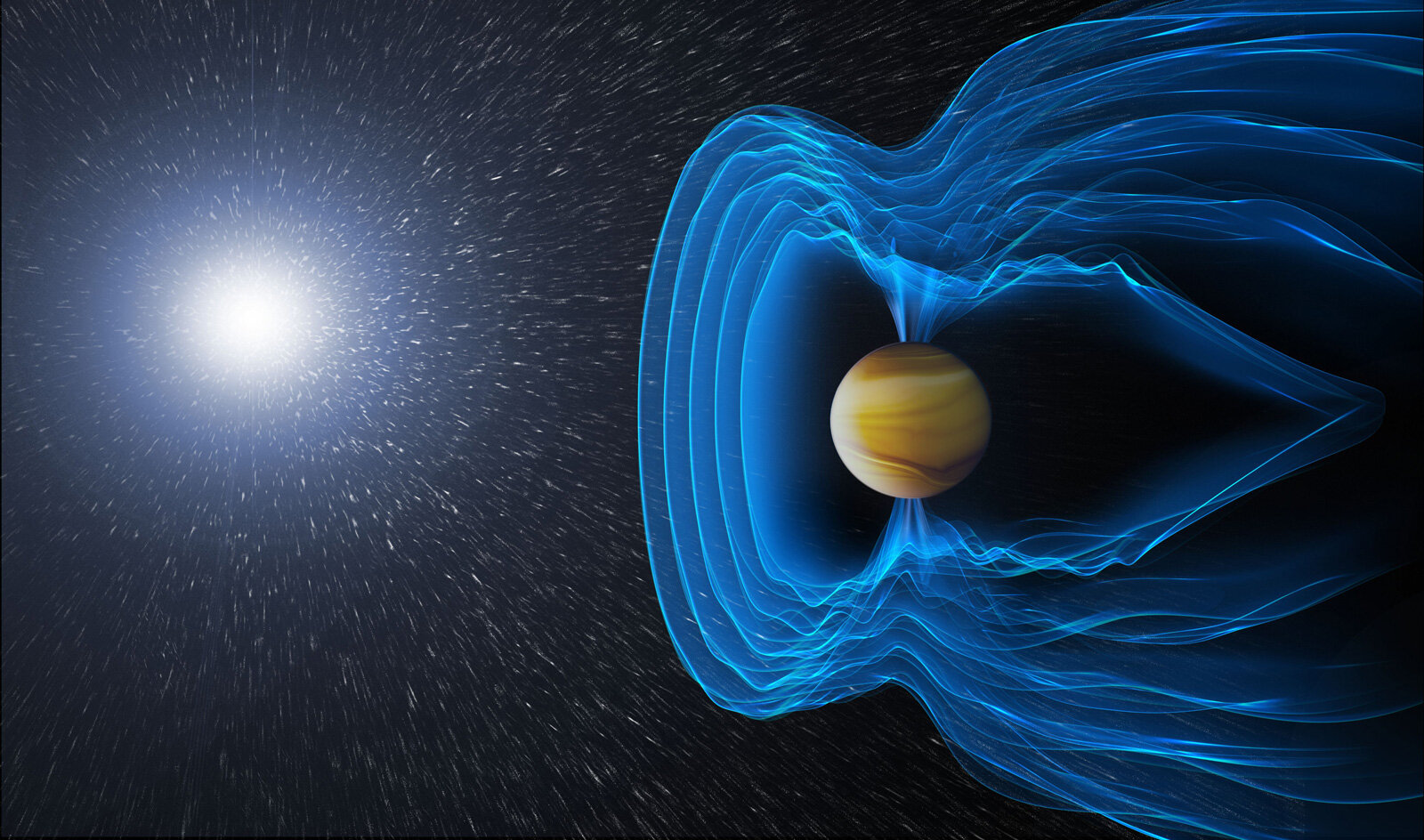
The Magnetospheres and Space Environments of Exoplanets
The Sun has a rich variety of radio emission below 100 MHz that is associated with the flares that follow magnetic reconnection events. One variant of this emission of particular interest for the OVRO-LWA is the Type II radio burst, which is associated with the shock of a coronal mass ejection (CME) which follows a powerful flare. Late type stars, especially young M-dwarfs, are known to have surface magnetic field strengths thousands of times that of the Sun which are capable of driving flares millions of times more energetic than has ever been observed from the Sun.
Although much more powerful than solar flares, we might expect to observe a similar variety of radio emission from stars as we see from the Sun. The observation of a stellar equivalent of a solar Type II burst is of particular interest as it would be indicative of a stellar CME, an event never before observed in the radio.
A flare capable of overcoming the strong magnetic field—upwards of several kiloGauss—of an active M dwarf has dire implications for the habitability of any planetary bodies around the star. As we see in comparing the Earth and Mars, a planet having a magnetic field makes the difference in retaining an atmosphere against the onslaught of a stellar wind. A planet with a sufficiently strong field is not only capable of saving its surface from a powerful flare, but also of accelerating the electron deposit from the wind and from the ambient plasma. Rather than a magnetic reconnection event which drives the stellar and solar flares, we could expect to see electron cyclotron maser emission as we observe from the magnetic planets in our solar system, and most characteristically from Jupiter. The cut off frequency of such emission is intrinsically tied to the magnetic field strength of the object, and as such gives the most direct probe to the magnetic field strength of the exoplanet. A periodic form of this emission inconsistent with the orbital period of the planet or its anticipated corotation radius could also be indicative of a system analogous to the Jupiter-Io unipolar induction system and thus serve as a way of determining the presence of exo-moons.
Although dedicated observations of stars and exoplanets at low frequencies have been occurring for decades, it is only recently that instruments have become sensitive enough to begin both making detections and allowing more rigorous analysis of the physical mechanisms responsible for the emission. The OVRO-LWA is among the instruments that will be capable of exploring the processes and environments responsible for radio emission from stars and exoplanets and thus introduce new ways to determine the habitability of exoplanets around late type stars and in understanding these environments in general.